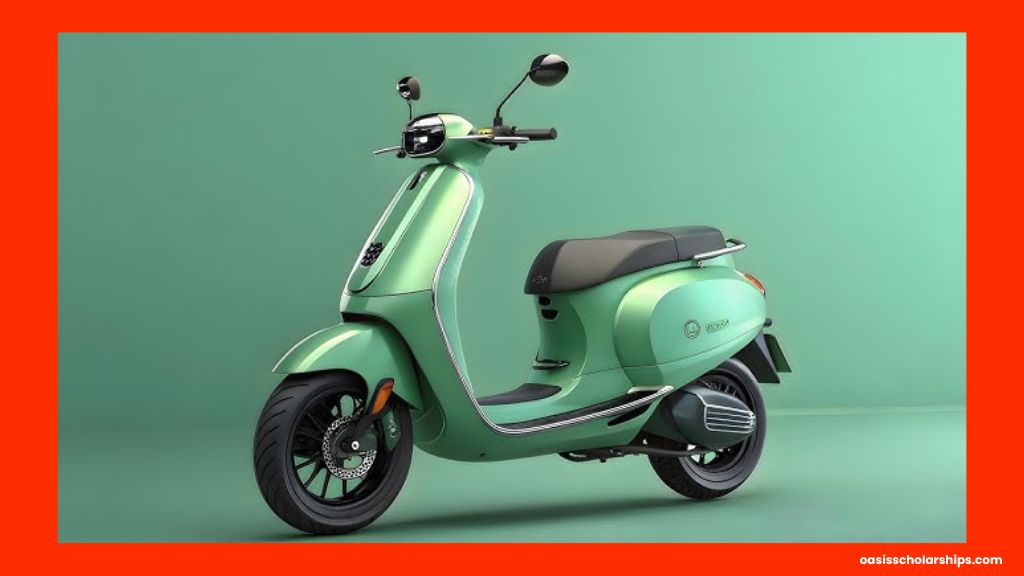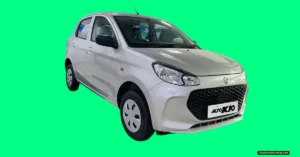Shopping for an electric scooter, especially one with as much buzz as the New Ola S1 Pro Gen 3 2025 Model, takes more than looking at those tempting spec sheets. As long-term owners, we think it’s time to talk straight, not only about cool features, but about what living with this scooter is really like. In this post, we’ll share our genuine experiences—good, bad, and everything between—after using an S1 Pro for more than 2.5 years. If you’re considering buying the latest Gen 3 model, read on so you can make a truly informed decision.
Our Long-Term Ola S1 Pro Experience
Let’s start with how we got here. We picked up our first Ola S1 Pro Gen 1 around two and a half years ago and have already clocked more than 20,000 km. Back then, the spec sheet boasted top speeds, big range figures, fancy touch features, and some serious value for money. That’s what pulled us in.
But these numbers can be misleading. There’s a big gap between what’s written on the brochure and what actually matters to us as riders day in and day out. That’s why we want to share what really stands out after the honeymoon phase, especially for those thinking about switching to the new 2025 model.
Build Quality and Durability: Where the S1 Pro Still Falls Short
Across Gen 1, Gen 2, and even now with Gen 3, the outer plastic quality hasn’t changed much. Unfortunately, it doesn’t give the premium vibe you might expect at this price. The panels look all right at first and they might even feel okay during a quick test ride, but after months of city commuting and hitting some rough patches, things get noisy.
Common Build Quality Issues:
- Noticeable panel gaps
- Persistent rattling and squeaks, especially on poor roads
- Plastics that flex and creak under pressure
- The switches and buttons feel flimsy
On one ride after a fresh update, we noticed more creaks than usual after a stretch of bumpy road. The sound makes it tough to enjoy the ride, especially in quieter areas.
We’ve tried temporary fixes like extra tape or customized padding, but these don’t solve the root problems. Without strong basic construction and tighter fits, these tricks just mask issues for a little while.
If you’re looking for something solid and quiet that’ll feel new for years, this is an area to pay special attention to on your test ride.
Ride Noise and Comfort
After miles of use, the scooter’s rattling gets hard to ignore. It’s not just an occasional buzz—you’ll hear it constantly over rough surfaces.
When it comes to riding comfort, we’re torn. We love the upright stance and find the S1 Pro really enjoyable for solo city riding, especially with its strong headlight. The seat size is generous, but that means pillion riders might have to splay their legs uncomfortably wide. Over long rides, this can become tiring for the passenger, even if the main rider isn’t bothered.
Parts Availability Might Become a Headache
Ola releases a new generation every year or so, but parts support doesn’t always keep up. When we needed a minor part for our Gen 1 (a small external piece near the speaker), the service center had nothing in stock. This wasn’t a rare complaint, either—a fellow owner was visibly upset over being unable to get even basic parts for a scooter less than 3 years old. Now, with Gen 3 and possibly Gen 4 or 5 soon, we worry about how easy it’ll be to maintain or repair older models.
Build Quality Takeaways:
- Don’t expect premium plastics for the price.
- Expect more ride noise over time.
- Watch out for limited parts support as new models arrive.
Performance: Expectations vs Reality
Ola advertises the Gen 3 with bold numbers: claimed top speed of 141 kmph and up to 320 km range. Impressive, but do those numbers stand the test of the road?
Let’s talk speed. Even if the speedometer nudges 90 kmph, the ride quickly starts to feel sketchy. Above that, the S1 Pro becomes less stable and doesn’t inspire confidence, especially in sports or hyper modes.
We tried out hyper mode a few times for the thrill, but the fun is short-lived. After about 10 minutes of spirited riding, the system disables the mode due to overheating. So, those fantasy top speeds and fast commutes linked to the highest settings simply aren’t sustainable in daily use.
Test Ride Checklist—Don’t Skip These:
- Run the scooter in hyper mode for over 10 minutes.
- Check how the scooter handles at 90+ kmph.
- See if it auto-switches off due to overheating.
- Try different riding conditions: flat, hilly, with an extra passenger.
Range: What’s Possible Day-to-Day
Ola claims 320 km on a charge. If you imagine cross-city trips without recharging, you might want to temper those fantasies. Even with careful driving, a mixed city ride using normal and sports modes will get you about 160–200 km at best—a figure that’s actually decent for daily city use, but very different from what’s advertised.
This isn’t uncommon. Manufacturers often test range under ideal lab conditions that don’t reflect heavy traffic, stop-go patterns, or carrying a passenger.
We wouldn’t plan a long out-of-town ride with the expectation of hitting those highest ranges, especially as eco mode is basically unusable for steady city traffic.
Eco Mode Is Still a Weak Spot
Eco mode is designed for efficiency, but on the S1 Pro, it feels like dragging a reluctant bicycle uphill. There’s little pick-up and the throttle response is nearly non-existent. Despite countless software updates since Gen 1, the basics haven’t improved much.
Even after a software update, we found acceleration slow and frustrating—there’s hardly any “go” and it feels barely usable for hills or with added weight.
Key Reality Checks:
- Top speed: Possible but not confidently usable at the limit.
- Range: Expect real-life numbers around half of advertised claims.
- Eco mode: Test it thoroughly before buying.
Service, Reliability, and Ongoing Issues
Service Center Experience Varies
Ola’s service network has been a source of pain for many owners, especially in early years. We’ve seen big improvement locally: less crowding, faster turnarounds, and more organized processes. But don’t take this for granted—some friends across the country report the opposite, with overcrowded centers, slow repairs, and poor communication.
Before buying, check the service reviews in your own city. Try visiting a service center to see how busy they are and if the staff is helpful.
Common Owner Complaints
- Sudden shutdowns: Some owners share horror stories of their S1 Pro (Gen 2) or S1X cutting out in the middle of a ride. The display dies and the scooter won’t start, sometimes even after repeat visits to the service center.
- Software bugs: Keyless entry often fails. Even after multiple resets, the system can glitch, especially if you’re not in a strong internet area.
- Parts delays: Repairs can take weeks if parts aren’t in stock.
A close friend ended up with his scooter in the service center for nearly two months—he even had to escalate to consumer court for lack of resolution. Sadly, even after repairs, the same issues returned.
Feature Reliability: Touchscreen Isn’t All Good
The giant touchscreen sets the S1 Pro apart visually, but some of its best features are more show than substance. The built-in music system is rarely useful, and the much-hyped keyless start via app only works if the scooter can connect to the internet. There’s no fallback to Bluetooth. In practice, this makes things unreliable when coverage is patchy.
As the scooter ages, the touchscreen shows lag just like a budget smartphone with too many new updates. We now restart ours every day or two just to keep it running smoothly.
Frequent Owner Complaints:
- Touchscreen lag and stutter
- Features that stop working after updates
- Keyless entry that fails in low-signal areas
- Frequent restarts required for smooth operation
Day-to-Day Ride Experience and Comfort
Some things Ola does get right. The S1 Pro’s standard ride comfort is enjoyable, and the headlight is strong—ideal for urban night rides. The main saddle is supportive, and for most riders, it’s a pleasant scooter for commutes or errands.
However, the wide seat means pillion riders often complain. With legs forced wide apart, longer journeys become tiring, and some struggle to find a comfortable position. Always take a test ride with a friend or family member if you plan to carry a passenger often.
Button and Switch Quality: Could Be Better
Almost all switches and buttons are made of basic plastic. They don’t click satisfyingly and feel like an afterthought. At a price of about ₹1.54 lakh on-road, we expected a more premium touch—especially now with Gen 3. Sadly, they’re unchanged.
We still wish the controls gave a better “feel”; they seem to cheapen the overall experience on an otherwise attractive scooter.
Smart Test Ride Tips and Buying Alternatives
Here’s what we push every buyer to do before making a choice:
Test Ride Checklist:
- Ride for at least 15 minutes, including uphills and with a pillion.
- Use every mode (eco, normal, sport, hyper) and notice performance shifts.
- Check comfort seated and as a passenger.
- Try toggling keyless entry and touchscreen functions, especially with mobile data turned off.
- Listen for rattles or body noises on rough roads.
- Compare service center experiences locally by visiting or calling.
Don’t Rush! Explore Alternatives
Ola isn’t the only option. Test ride these competitors:
- Ather 450X: Renowned for build quality and responsive ride.
- Ultraviolette Tesra: New on the scene, worth waiting for a demo.
- TVS iQube: Reliable and backed by a bigger network.
Check what’s available in your area, and consider waiting if there’s a big new launch around the corner. A little patience can save a lot of trouble later.
Price: Don’t Be Fooled by Discounts
Ola sometimes announces launches with discounts of ₹10-15,000 off. Don’t buy in a hurry just because of a special price. Over three or more years, little savings at the start won’t make you forget build or service headaches.
We’re generally happy with daily use, but had the build been stronger, or support more reliable, we’d feel the scooter truly justifies its premium price tag.
Pros and Cons at a Glance
| Pros | Cons |
|---|---|
| Comfortable for solo city rides | Average plastic quality, rattles over time |
| Strong headlight and good visibility | High-speed instability, especially above 90 kmph |
| Realistic range of 160-200 km | Eco mode slow and unresponsive |
| Decent features: ABS, brake by wire | Touchscreen lags as it ages |
| Good main rider comfort | Service and parts support inconsistent |
| Buttons and switches feel cheap | |
| Sudden shutdowns and software bugs reported |
Conclusion
Buying an electric scooter is more than a quick decision—it’s a long-term partnership. The New Ola S1 Pro Gen 3 2025 Model dazzles on paper, but we urge everyone to weigh the full ownership experience. Go beyond the specs, ride real-world routes, check out local service, and try alternatives.






